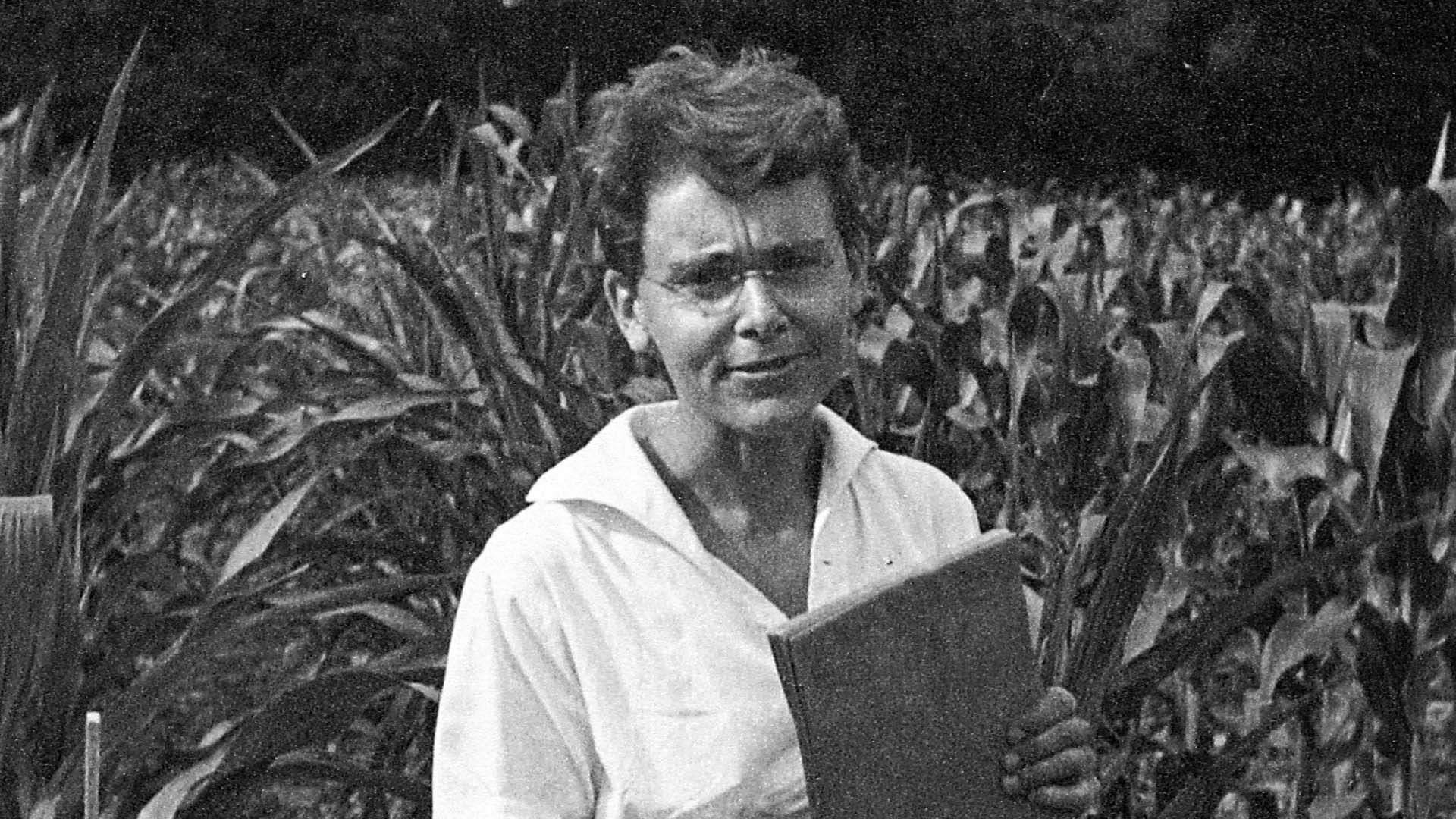Barbara McClintock was a scientist from the United States whose groundbreaking contributions transformed the study of genetics. Her investigations not only uncovered essential genetic processes but also deepened the comprehension of genome behavior. McClintock’s accomplishments are particularly remarkable considering the period during which she conducted her work, when genetics was still a developing field and opportunities for women in science were restricted.
Genetics before McClintock
Prior to McClintock, the scientific community generally believed that genes had fixed positions on chromosomes. The concept of genomic stability had not yet been seriously questioned. Discoveries by Gregor Mendel, Thomas Hunt Morgan, and Charles Darwin provided a framework of inheritance, chromosomal theory, and evolutionary change. However, these frameworks largely depicted genomes as stable blueprints, rarely subject to internal change outside of mutation due to external agents.
Initial Studies by McClintock: Corn Cytogenetics
Barbara McClintock carried out a significant portion of her pioneering studies on maize (corn) at Cold Spring Harbor Laboratory. Her skill in maize cytogenetics—examining cellular structures, chromosomes, and their connection to gene functions—was unmatched. By employing light microscopy and original staining methods, she was able to describe the physical properties of chromosomes during cell division, revealing processes that had escaped scientists before.
A notable initial accomplishment was her investigation of chromosomal crossover during meiosis. Through careful observation, McClintock showed that chromosomes actually swap sections. This offered visual evidence of genetic recombination, backing theories suggested by Morgan’s fruit fly studies.
The Discovery of Transposable Elements
McClintock’s most renowned contribution was her identification of transposable genetic elements, or “jumping genes.” During experiments in the 1940s and early 1950s, she observed anomalies in color patterns of maize kernels. She postulated that some genes could change their position within the genome, disrupting the function or regulation of other genes.
Examining the Activator (Ac) and Dissociator (Ds) components, McClintock illustrated how particular genetic sequences could relocate within a chromosome. For example, the presence of Ds at a certain site might interfere with the pigment gene in corn, resulting in speckled or multi-colored kernels. Ac could assist in the relocation of Ds, and their interactions produced a range of detectable kernel designs.
This mechanism explained not only color variation but also provided a model for how genes might be regulated or turned on and off—concepts central to modern epigenetics.
Scientific Impact and Initial Dismissal
Although these discoveries were crucial, McClintock’s peers remained doubtful. The idea of gene movement was so groundbreaking that it clashed with the fixed and unchanging perception of the genome that was common then. For many years, her research was pushed aside, and references to her conclusions were few and far between.
It was not until the late 1960s and 1970s, as similar elements were identified in bacteria (such as insertion sequences in E. coli), that the broader scientific community recognized the accuracy and importance of McClintock’s discoveries. Her findings became foundational as mobile genetic elements were found to play key roles in mutation, genome structure, antibiotic resistance, and evolutionary adaptation.
Broader Significance and Ongoing Influence
Many years after her time, McClintock’s studies are viewed as foundational in the field of molecular genetics. Jumping genes, also known as transposable elements, have been discovered in almost every species, including humans, where they comprise a significant part of the genome.
Additional research building on her findings has associated mobile genetic elements with important biological processes:
1. Genetic Diversity: Mobile elements contribute to genomic variation and evolution. 2. Genome Plasticity: Organisms use transposable elements to adapt to environmental challenges. 3. Gene Regulation: Transposons can serve as regulatory elements, influencing when and how genes are expressed. 4. Human Health: Some human diseases, including certain forms of cancer, result from transposon activity. 5. Biotechnology: Tools like gene therapy and gene editing have roots in the understanding of mobile genetic sequences pioneered by McClintock.
Recognition and Legacy
Barbara McClintock received the Nobel Prize in Physiology or Medicine in 1983—the only woman to receive an unshared Nobel in this field. The award cited her discovery of “mobile genetic elements,” validating work she conducted decades prior and underscoring her perseverance in the face of skepticism.
Her methodologies—direct observation, hypothesis through experimentation, and interpretation of unpredictable results—brought an integrative vision to genetic science. She remains an emblem of the power of curiosity and independent thinking in research.
Barbara McClintock’s research fundamentally altered our understanding of the genome, exposing it as dynamic and responsive rather than merely static. Her work with maize illuminated mechanisms by which genetic material can reorganize itself, generate diversity, and adapt. The vast subsequent research on transposable elements has demonstrated how single discoveries can reshape entire scientific paradigms, ultimately offering deeper insight into the architecture of life itself.





